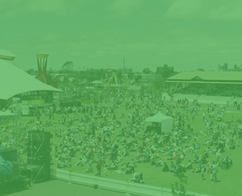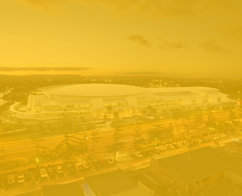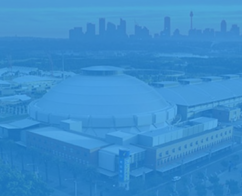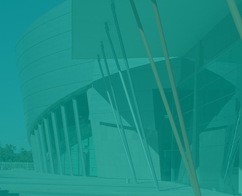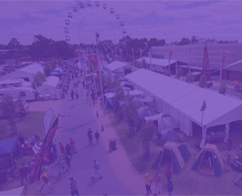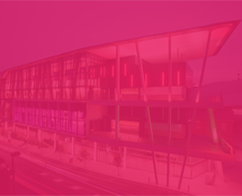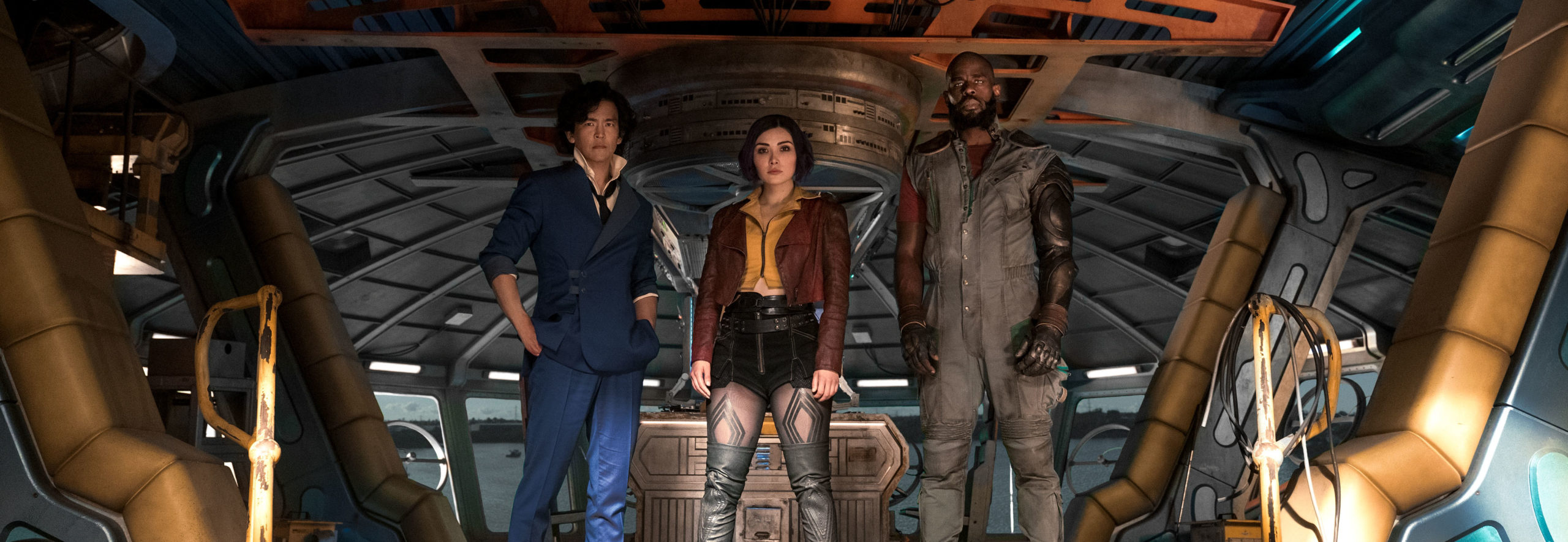
No Guest Found in this category
Netflix’s live-action adaptation of Cowboy Bebop is almost here! We can now officially answer the question: can any remake possibly live up to one of the greatest anime of all time, a truly ahead-of-its-time masterpiece?
Not quite. Cowboy Bebop (2021) is not as perfect as the original, but we can’t overstate the fact that they come pretty damn close, and that’s still an insanely high bar to clear when you’re remaking a genre-defining, era-defining, classic. It’s a rollercoaster of beautifully high highs and low lows, but it has enough in common with the spirit of the original that, ultimately, it’s hard not to enjoy the time you’ve spent with this “group of weirdos”. So, what makes the new Bebop’s trip around this dusty, grimy galaxy so memorable, and what could be improved for the next go-round? Let’s jam!
Let’s start with the show’s strongest aspect: the characterisation. Though the main crew are all pretty different from their animated counterparts, they’re still faithful to the core elements that make those characters tick, and a lot of that is down to the excellent performances. The naturalistic acting approach (for the most part…) makes characters as cool as Spike and Faye actually seem possible; they feel like real people, not cartoony impersonations. John Cho has an effortless swagger as Spike, he’s not trying to look cool, he is cool, and underpinning all that confidence and charm is still that mysterious, emotionally fractured man, running from a past he can’t leave behind.
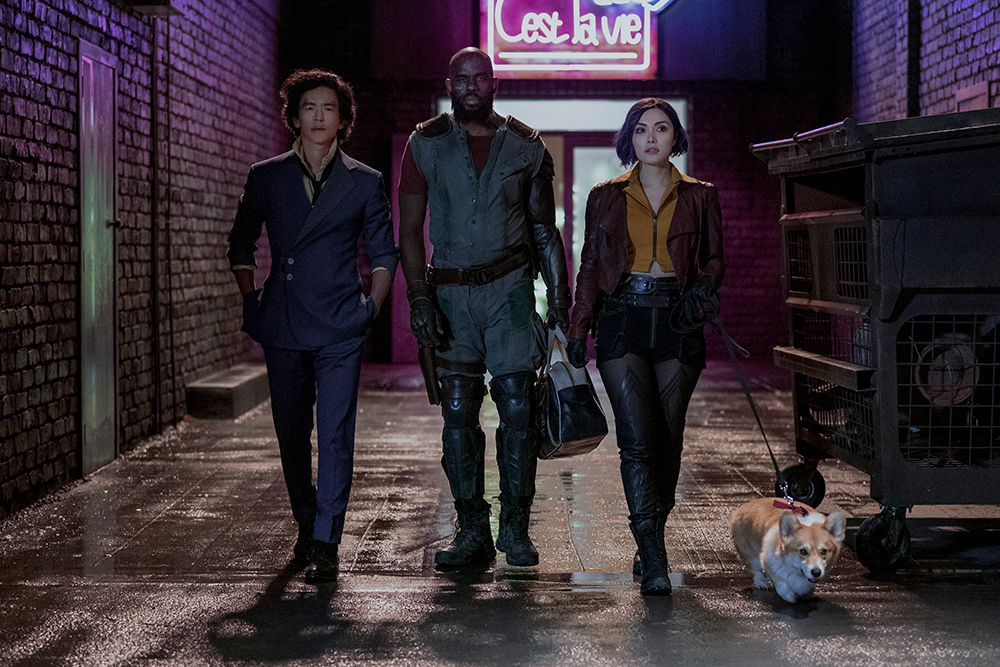
L to R: JOHN CHO as SPIKE SPIEGEL, MUSTAFA SHAKIR as JET BLACK, DANIELLA PINEDA as FAYE VALENTINE and EIN in ‘COWBOY BEBOP’. Cr. GEOFFREY SHORT/NETFLIX © 2021
Faye is the most different, but ended up being my absolute favourite character on the show. Showrunner André Nemec put it best: Faye is “scrappy, spunky, funny, up on her toes, down on her luck…” She can’t catch a break, but won’t let her losses slow her down or stop her, and with an ego that’s betrayed by a certain longing underneath. Daniella Pineda captures it all really deftly, she’s the best part of the show.
Jet is kind of shafted in this trio; the decision to give him an ex-wife with an estranged kid is at odds with the tone of the show sometimes. In the anime, these people had no material ties to the world, that’s why they’re all just drifting around the galaxy running from their pasts. Giving Jet a constant connection to the world outside the Bebop doesn’t really work, and the scenes involving his child are really more of a distraction from the most interesting stuff. Despite that, when Jet isn’t talking about his kid, he’s great, Mustafa Shakir really gets Jet’s world-weary vibe. They all have great chemistry together, and their dynamic feels believable.
Lastly, Vicious is now a completely different character than he used to be, the only thing he has in common with the anime is his name and his sword. I understand the attempt to give Vicious some additional depth since he was a bit one-note in the anime, his whole personality was basically spelled out in his name, but that was his appeal. He didn’t really need any more development than what he got. Sometimes a monster without a complex raison d’etre is more intimidating than a guy with hours and hours of backstory.
Are you living in the real world?
There is one more character in Cowboy Bebop we gotta discuss though, and that’s the character of the show. I’m talkin’ about the vibe, the tone, the world, the thing that draws people into the show as much as, if not more so, than the great characters and writing. In the anime, the art and tone of the setting play a big hand in bringing you into the show, accompanied by that sometimes whimsical, sometimes wistful soundtrack by Yoko Kanno. It all draws you into this story, building the character of Bebop, a futuristic yet analogue world, messy and carefree, fun but bittersweet. Every episode takes you on a journey as ethereal as it is enjoyable; they’re good because they’re fleeting, the journey can’t last forever, but while it’s here, the show blends genres and styles, plays with convention, and throws away the rulebook in a glorious spectacle. Just take a look at what all that text flying by in the opening theme actually says:
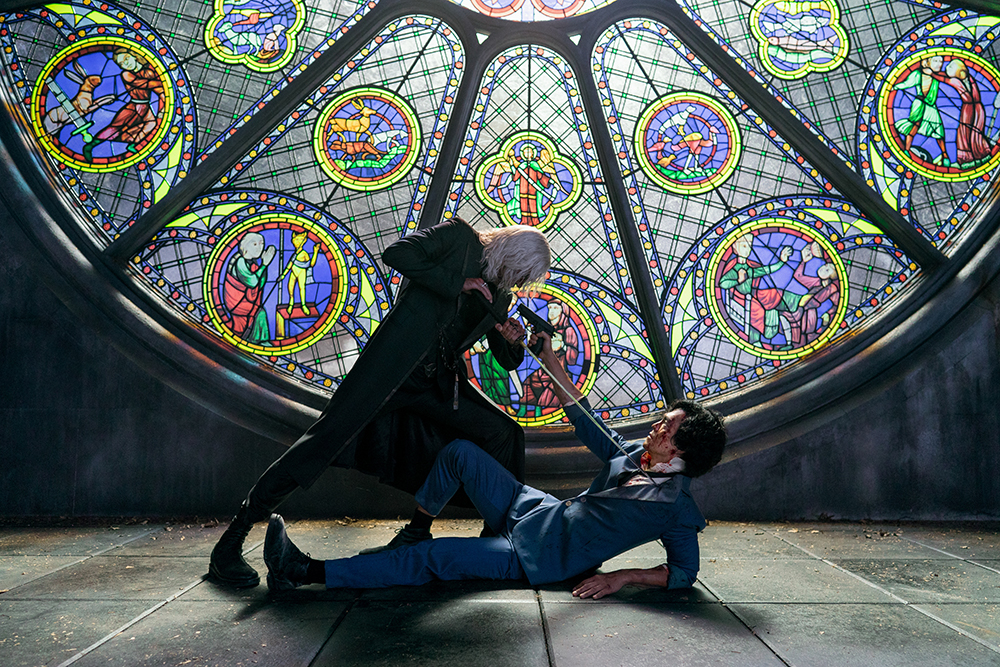
L to R: ALEX HASSELL as VICIOUS and JOHN CHO as SPIKE SPIEGEL in ‘COWBOY BEBOP’. Cr. GEOFFREY SHORT/NETFLIX © 2021
Once upon a time, in New York City in 1941… at this club open to all comers to play, night after night, at a club named “Minston’s Play House” in Harlem, they play jazz sessions competing with each other. Young jazz men with a new sense are gathering. At last they created a new genre itself. They are sick and tired of the conventional fixed style jazz. They’re eager to play jazz more freely as they wish then… in 2071 in the universe… The bounty hunters, who are gathering in the spaceship “BEBOP”, will play freely without fear of risky things. They must create new dreams and films by breaking traditional styles. The work, which becomes a new genre itself, will be called… COWBOY BEBOP
That’s the show’s mission statement right there, the manifesto from Shinichiro Watanabe. All this waxing lyrical and poetics is to say, that the Netflix version was always going to be fighting an uphill battle to capture this feeling. Shinichiro Watanabe had to fight for his show; Bebop was cancelled halfway through its initial run, and he fought to get it back, promising staff that “this show would be talked about ten years later”. Here we are, almost 24 later. He was making a ground-breaking new show, Netflix is re-making Cowboy Bebop the ground-breaking show – the ground has already been broken. However, lightning can strike twice, occasionally.
Episode five, Dark Side Tango, has a lot of fun with its presentation, veering hard into noir territory, it’s pulpy and cheesy in all the right ways, and the banter between crewmates, as they compare bounties in a game of one-upmanship, is presented in dynamically. Episode six, Binary Two-Step is another one that tries some wacky stuff with its presentation, and it doesn’t always land, but that is exactly what we want to see. Experimentation doesn’t always need to be effective, but the attempt is what matters, the freedom to play. Episode nine, Blue Crow Waltz, is a standout that’s unlike anything we’ve seen from Bebop before. What was once only subtext from the anime, finally becomes full text here. It has some very wacky scene transitions, excellent cinematography, and stunning fight choreography. Speaking of cinematography, Bebop 2021 also charts its own course on that too, and attempts to build its own visual identity, though there are several direct homage shots. It almost comes off as ‘student filmy’ sometimes in just how strange it can get, but that has a charm to it! Experimentation isn’t about being perfectly polished and having a Netflix sheen, this show has the confidence to not always get it right, and that is very much in the spirit of the original.
“I tell ya, instead of feeling alone in a group, it’s better to have real solitude all by yourself.”
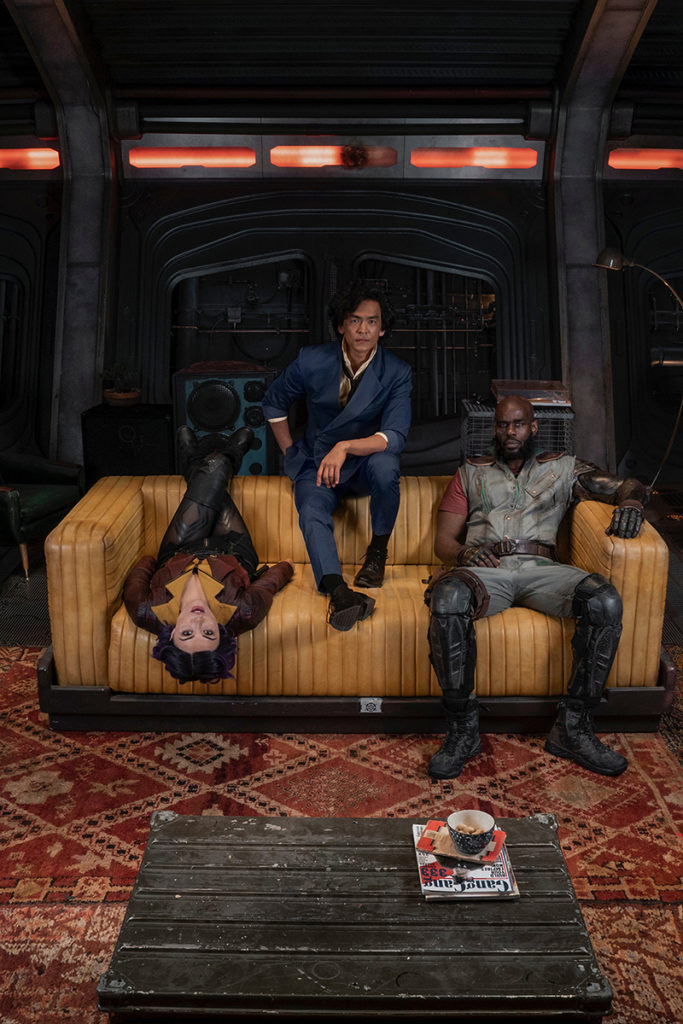
L to R: DANIELLA PINEDA as FAYE VALENTINE, JOHN CHO as SPIKE SPIEGEL and MUSTAFA SHAKIR as JET BLACK on the set of ‘COWBOY BEPOP’. Cr. NICOLA DOVE/NETFLIX © 2021
Finally, how well does the show execute on its themes? This is still a found family story, but it’s definitely a more Western take on the concept. Bebop 2021 is very upfront and sincere with its themes of family, and though I can’t say I preferred it, it did pave its own way and walk down that path confidently. I’ll admit it, I even got choked up a few times, you really do grow attached to this cast. In the original, the crew was a found family, but they were all loners enjoying being alone together, they wanted each other’s company even if none of them would ever admit it.
“Nice tune, real easy…”
To me, a remake should try to do two things if it wants to be considered worthwhile: 1) Highlight an underdeveloped aspect of the original in a satisfying and interesting way, or 2) Re-examine something people are attached to about the original and mess with it in a satisfying or provocative way. Bebop 2021 does do enough of both of these things that we reckon people should give it a chance. If you’re a newcomer to this series, and this version has piqued your interest: watch it! And if you like it, watch the anime after that!
And for fellow fans of the original, who’ve probably watched it a thousand times already and no doubt will a thousand times again, I’d like to implore you to allow another very talented team to draw you in one more time and show you another version of this universe. If you’re chasing that feeling of wishing you were sitting on that aged-leather couch aboard the Bebop, letting the melancholic sounds of the harmonica take you away, thinking of how nice it would be to jam with Ed and Ein one more time, chase one more ill-fated bounty with Faye, or share one more cigarette with Spike and Jet, give this a shot, and whatever happens, happens.
See you, space cowboy…
Cowboy Bebop premieres on Netflix on November 19
LEAD IMAGE BY GEOFFREY SHORT



